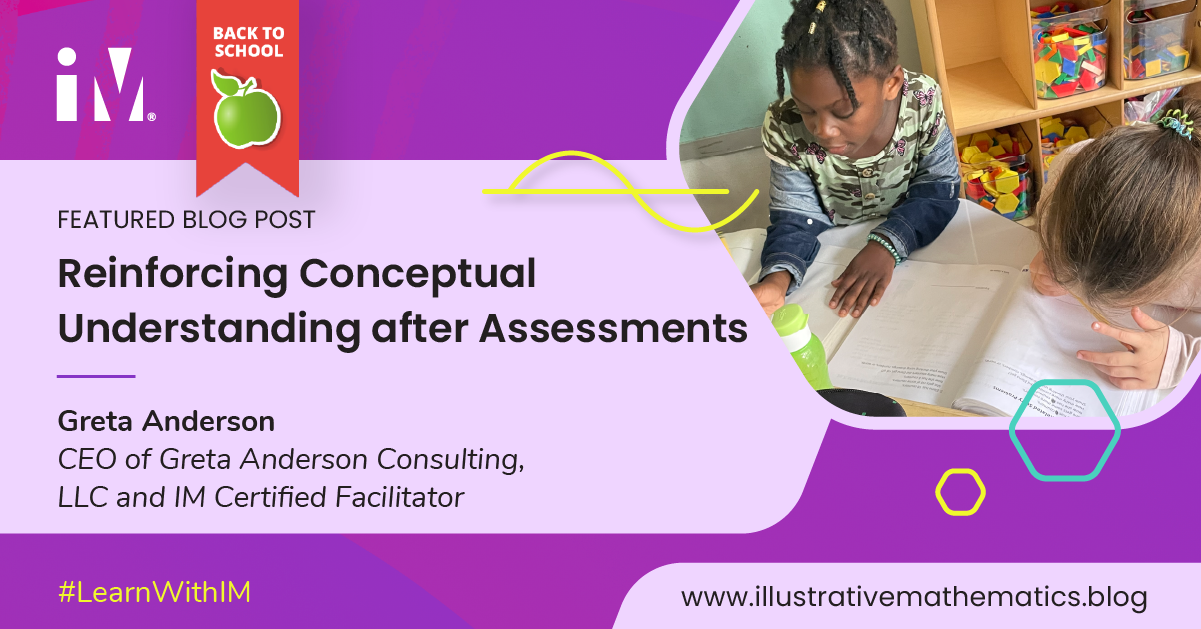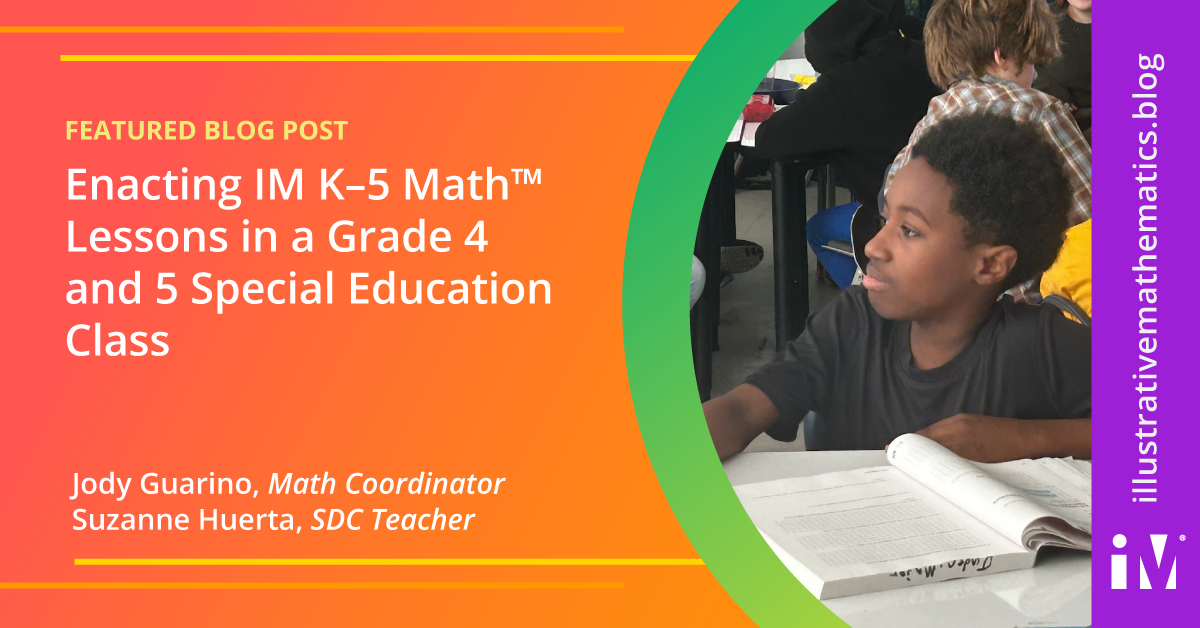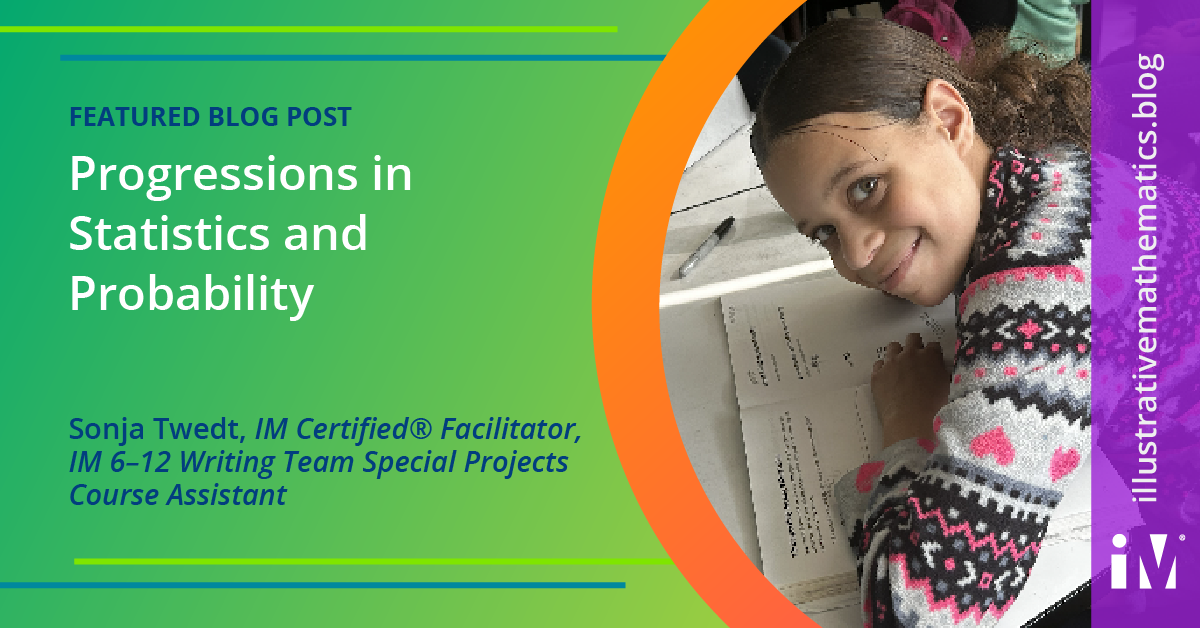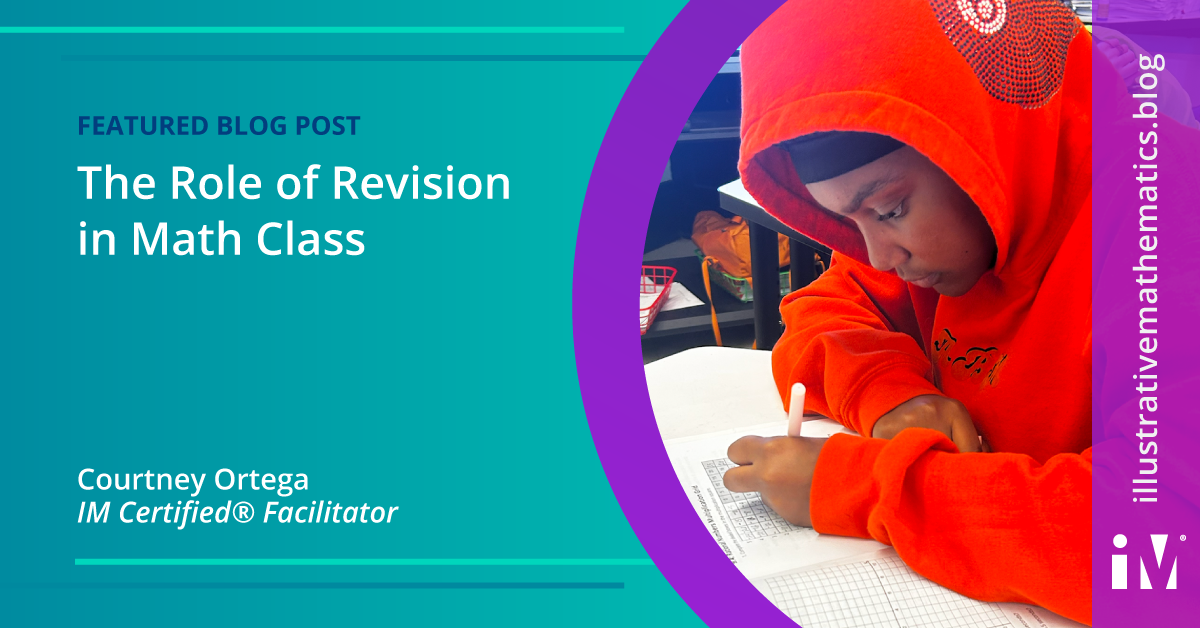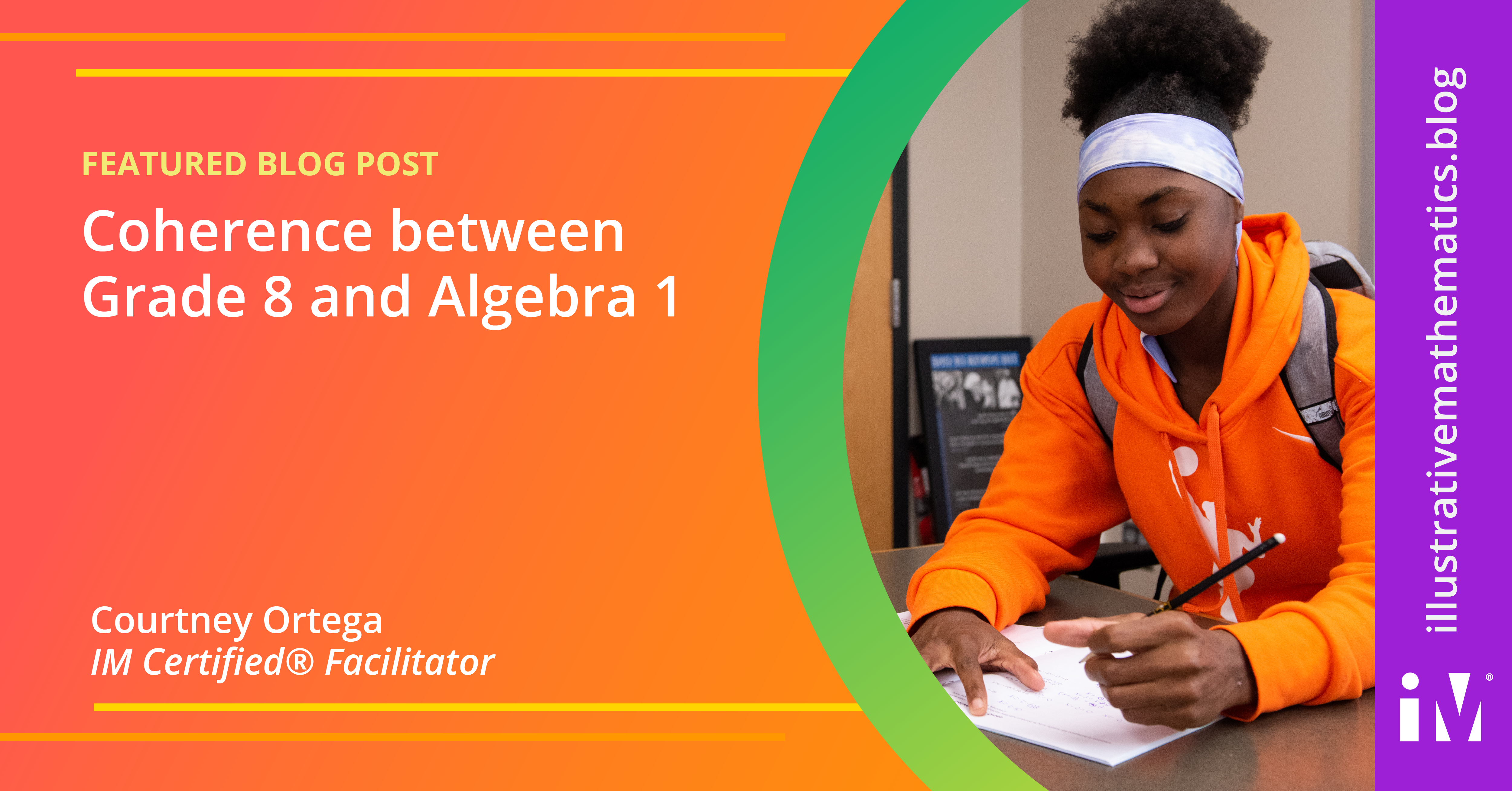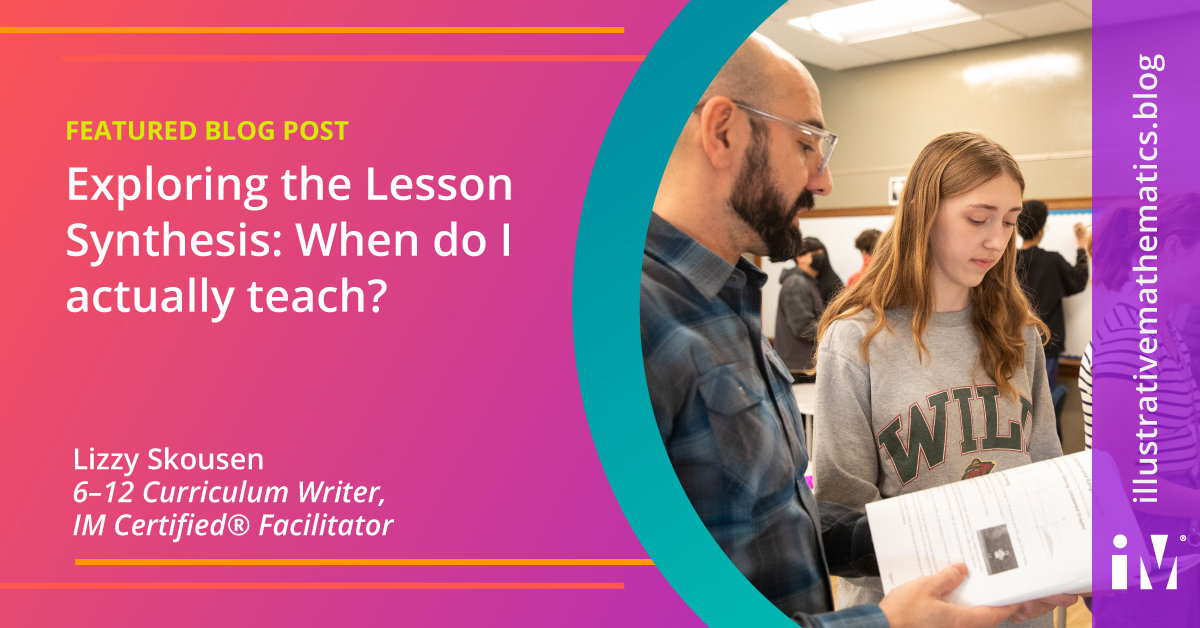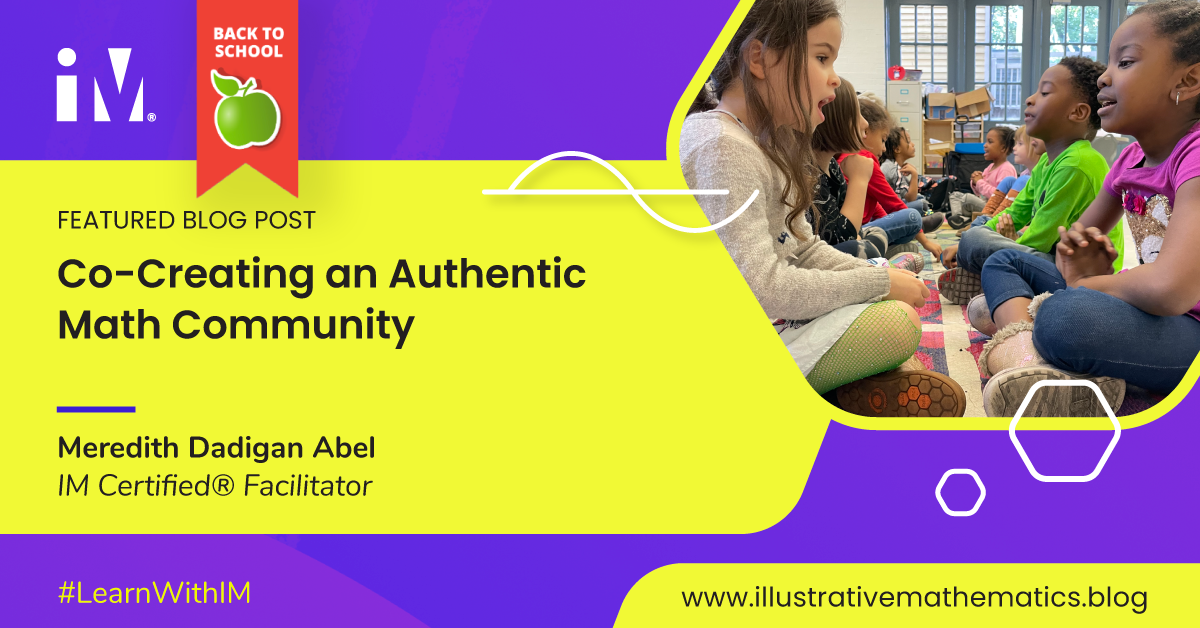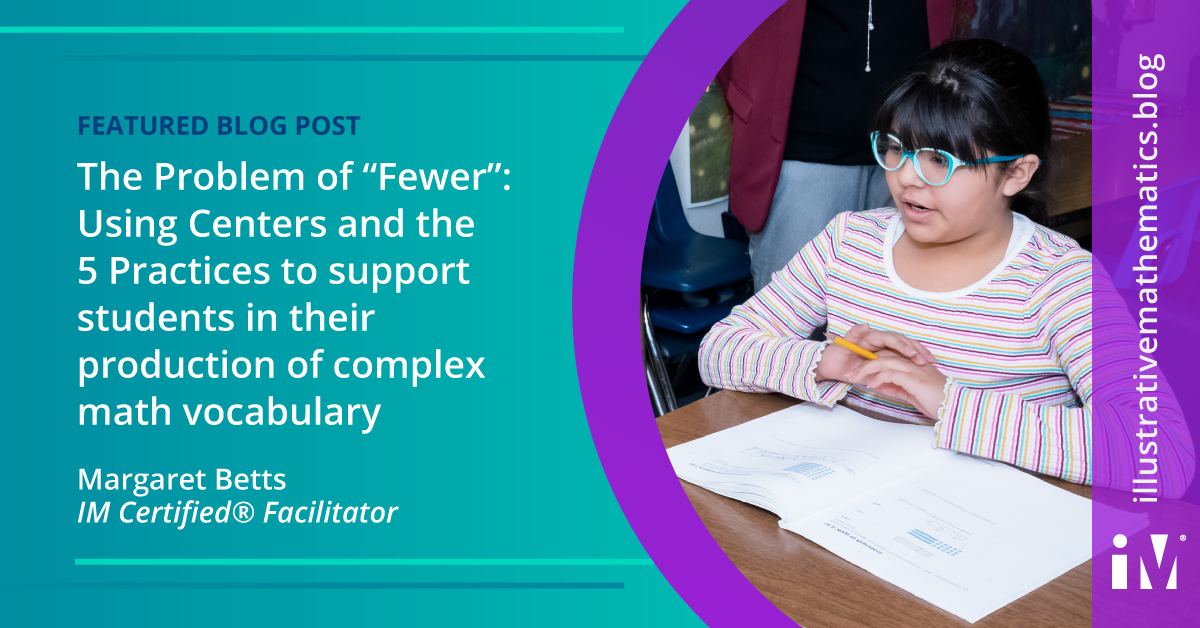IM Certified® Blog
IM Kickoff Message for 2024
A Look Back and a Look Ahead By Bill McCallum, IM Co-Founder and CEO Hello there, and welcome to 2024! I hope that you have had time to relax and recharge in preparation for all of the excitement that this year will bring....
5 Steps We Must Take To Truly Create An Inclusive, Representative, and Equitable Society
In her interview with Yitzi Weiner for Authority Magazine, Odalis Amparo (Illustrative Mathematics’ Professional Learning Specialist) emphasizes the significance of culturally responsive and equitable mathematics education....
Reinforcing Conceptual Understanding after Assessments
By Greta Anderson, CEO of Greta Anderson Consulting, LLC and IM Certified Facilitator There’s a common misconception that has surfaced on a checkpoint, but no additional minutes or days to reteach. How will this impact...
Making math relevant starts with valuing your students’ experiences
Anita Crowder, Director of Impact at Illustrative Mathematics, reimagines math education by emphasizing the importance of students' own experiences and existing knowledge. She challenges the traditional view of students as...
Visualizing IM K–5 Math™ within a Dream Team of Supports
By April Mouton, Senior Director, Access, Content & Equity and Brea Jimenez, Specialist, Facilitator Certification and Quality Assurance The Gradual Release of Responsibility approach to learning mathematics—I do, we...
Introducing IM 360: Taking Students Around the World of Mathematics
By William McCallum, IM CEO You asked, we listened, and now, we are preparing to deliver! I am excited to tell you today about our new curriculum, IM 360, which was developed based on your thoughtful feedback. IM 360 is the...
Cultivating Joy in the IM Classroom
By Deborah Peart, Founder and CEO of My Mathematical Mind If we want students to Know, Use, and EnJOY mathematics, it begins with teachers. Joyous math experiences are about more than having fun and keeping students happy...
Building Thinking Classrooms with the IM Curriculum
By Adrienne Baytops Paul, Math Specialist, UnboundEd, COO of My Mathematical Mind, and former Middle School Teacher The 14 Practices of Peter Liljedahl’s Building Thinking Classrooms (BTC) complement the Illustrative...
Getting Ready for 2023–2024 Back to School: Getting to Know Your Curriculum
By the IM Team And just like that, school is back in session! Whether you are implementing the IM curriculum for the first time or getting a fresh start as you experience year two or three, the beginning of the year is the...
The IM Experience—Let’s All Know, Use, and Enjoy Mathematics
By Dionne Aminata, IM Senior Director, Strategic Initiatives As a fully remote organization, the IM team gets a lot done working behind the screens. Now, with IM K–12 Math in full swing, many of us are stepping away from...
Getting Ready for 2023–2024 Back to School: Building a Math Community
By the IM Team As summer winds down, we understand that you are not rushing toward the finish line of your summer break. Hopefully, there have been many lazy days, trips or adventures, and time spent with family and...
Planning for Conference Season: Making Time to Connect and Learn
By Dr. LaToya Byrd, IM Senior Director, Professional Learning Implementation and Talent The excitement is building. Can you feel it? Conference season is almost here! Math conferences create opportunities for educators to...
Collaboration Rather Than Competition: Creating Collaborative Classrooms Through Illustrative Mathematics
By Eric Partridge, IM Certified® Facilitator I don’t have many memories from elementary school. The one memory I have from elementary math is from playing Around the World. The object of this game was to answer a...
Enacting IM K–5 Math™ Lessons in a Grade 4 and 5 Special Education Class
By Jody Guarino, Math Coordinator and Suzanne Huerta, SDC Teacher What does it look like for everyone in a school to learn together? This question, posed by Elham Kazemi, pushes us to consider that we, adults and educators,...
Unit 9 in IM Grades 6–8: Hidden Gems
By Lisa Matthews, IM Certified® Facilitator and PL Specialist Team for Grades 6–12 The IM curriculum is so thoughtfully designed and written that even those of us who have spent years with IM often find content that is new,...
The Power Of The Statistics and Probability Progression In Grades 6–8
By Sonja Twedt, IM Certified® Facilitator, IM 6-12 Writing Team Special Projects Course Assistant “In the digital era, data is the new oil.” —Srini Vemula I can’t think of many middle school students I know who are not...
The Role of Revision in Math Class
By Courtney Ortega, IM Certified® Facilitator Learning takes time. Students make connections, deepen their understanding, and address misunderstandings. It can make the learner feel vulnerable. “When we learn, we actively...
Beyond Curriculum Adoption: A Vision of the IM Classroom
By William McCallum, IM CEO Here at IM we are excited by and proud of the reception IM K–12 Math™ is getting. As more and more districts adopt it, we are thinking about how to support them. What are the next steps? Our...
Coherence between Grade 8 and Algebra 1
By Courtney Ortega, IM Certified® Facilitator I was recently in a meeting where a participant declared, “Grade 8 and Algebra 1 basically have all the same standards.” Have you ever wondered this yourself? Have you heard...
Exploring the Lesson Synthesis: When do I actually teach?
By Lizzy Skousen, 6–12 Curriculum Writer, IM Certified® Facilitator During a problem-based lesson, the teacher does a lot of listening while monitoring student learning. When teachers are introduced to a problem-based...
Co-Creating an Authentic Math Community
By Meredith Dadigan Abel, IM Certified® Facilitator It is magical to be in a classroom with a strong math community. In this classroom, the brilliance of all students prevails. Students and teachers share a unanimous belief...
The Problem of “Fewer”: Using Centers and the 5 Practices to support students in their production of complex math vocabulary
By Margaret Betts, IM Certified® Facilitator If story problems are your teacher kryptonite, you aren’t alone. Story problems are mathematical situations expressed with words. The element of reading creates an added layer of...
Centers in Kindergarten: Purposeful Play and Authentic Assessment
By Cheryl Fricchione, IMCF and Implementation Development Team Member A quick Google search for “kindergarten math centers” produces over 20 million results: everything from tips to make centers work to theme-based...
Representations in the Story of Mathematics
By William McCallum, IM CEO co·her·ence noun the quality of being logical and consistent. the quality of forming a unified whole. One of the things I am proud of about IM K–12 Math™ is its coherence. This shows up in many...


